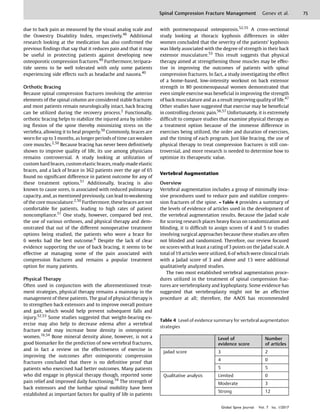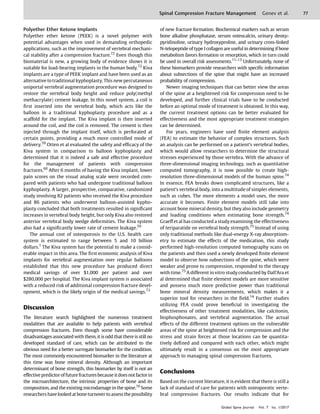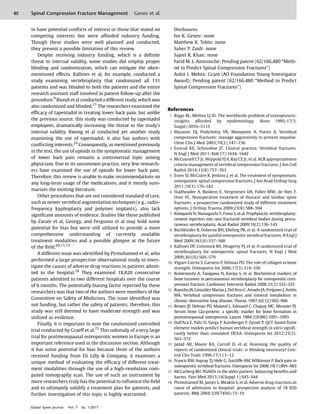This document reviews current treatment strategies for spinal compression fractures and potential future directions. The major current treatment strategies are conservative pain management and vertebral augmentation procedures like vertebroplasty and kyphoplasty. However, there is a lack of consensus on the optimal treatment approach. Prospective clinical trials with new biomarkers are needed to better assess treatment efficacy and develop clearer guidelines. The document provides an overview of common pain management strategies like NSAIDs, opioids, and bisphosphonates as well as vertebral augmentation procedures and calls for future research to establish standardized treatment pathways.











